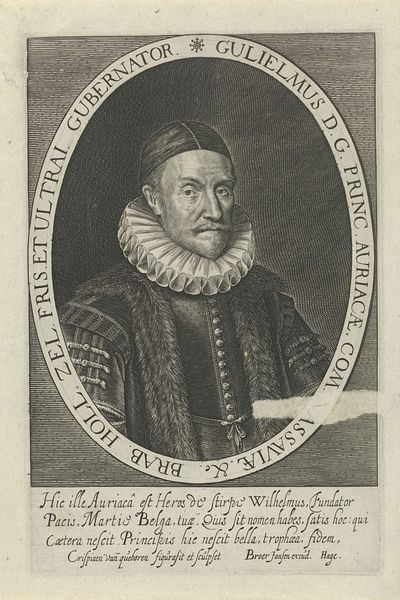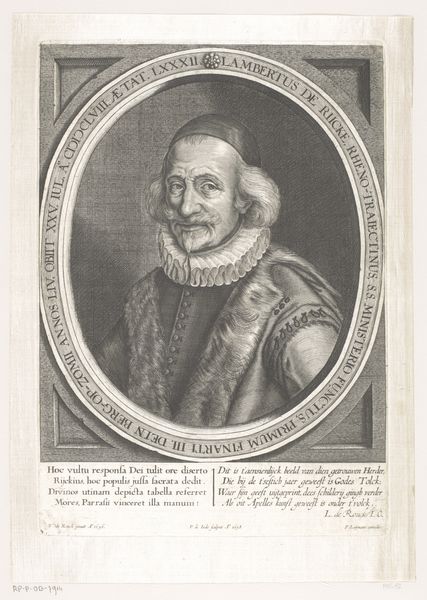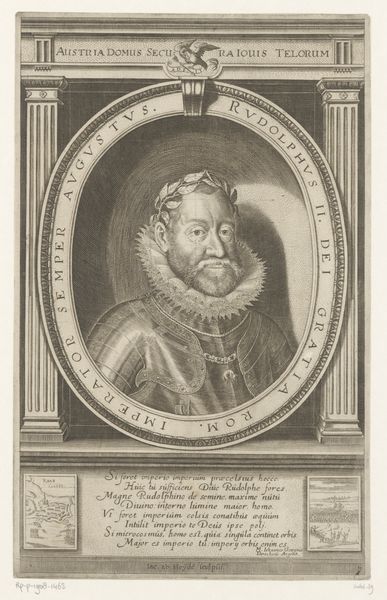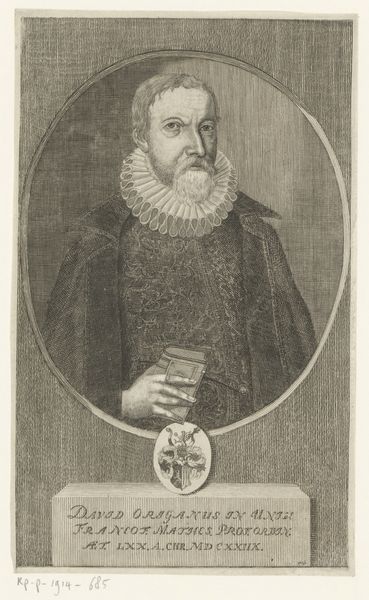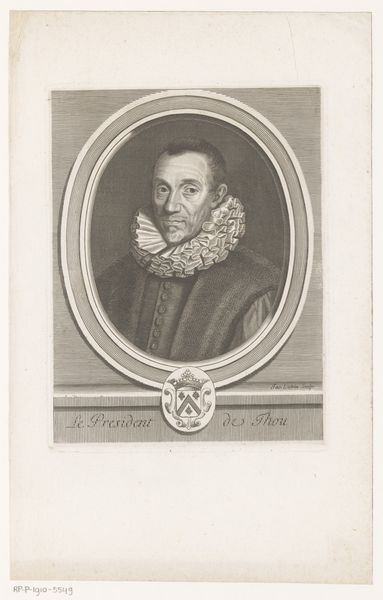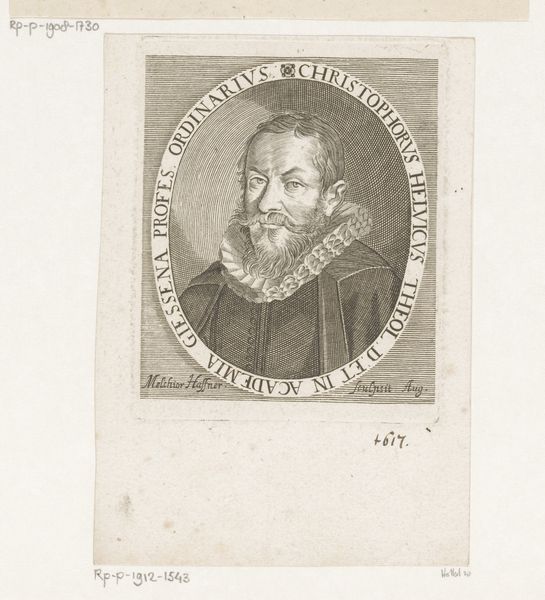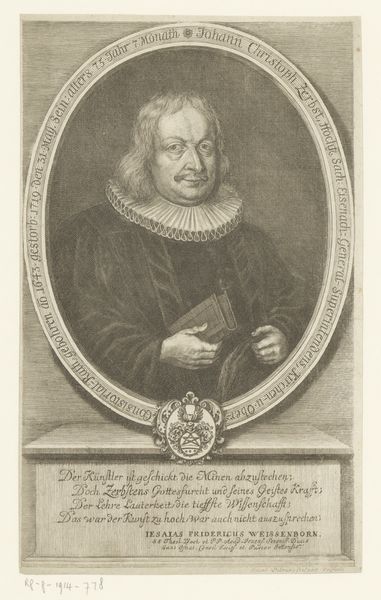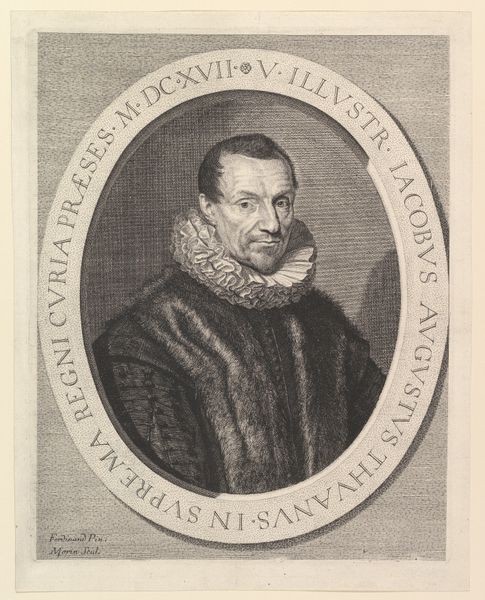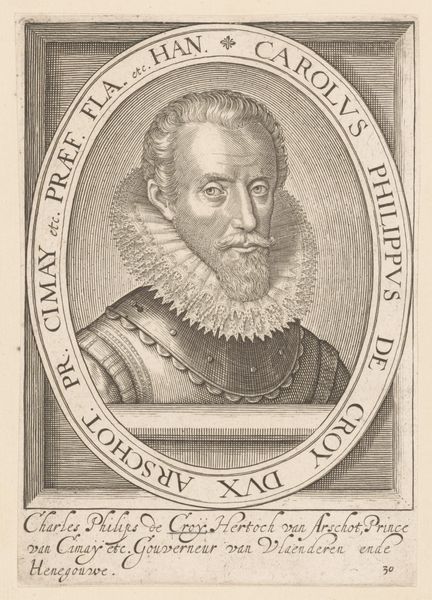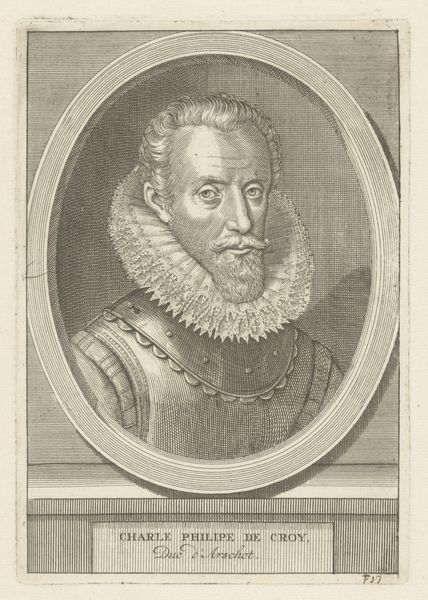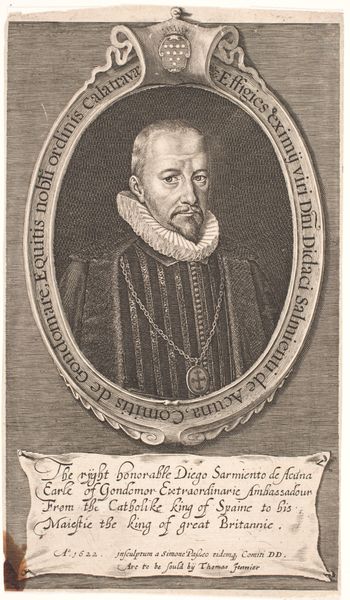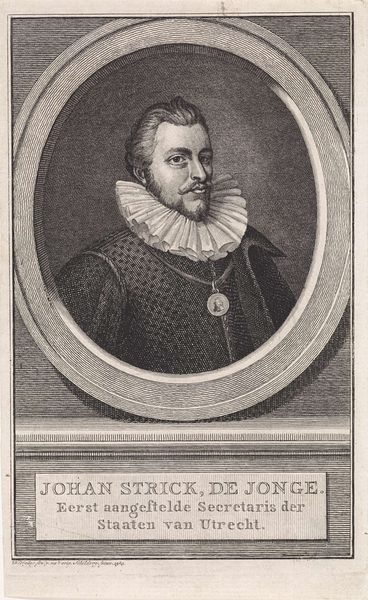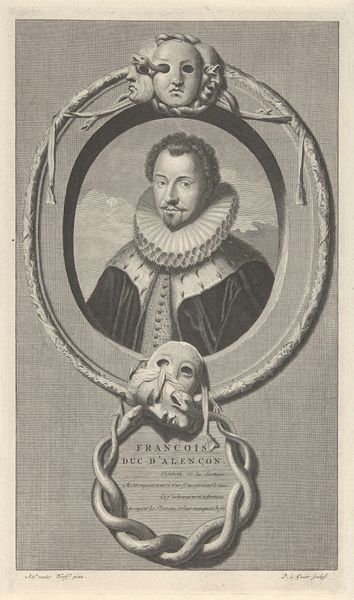
Dimensions: height 177 mm, width 111 mm
Copyright: Rijks Museum: Open Domain
Curator: Before us is "Portret van Filips van Marnix, heer van Sint-Aldegonde," an engraving created between 1790 and 1796 by Jacob Houbraken, currently held at the Rijksmuseum. Editor: It’s striking how much this detailed portrait conveys. Just at first glance, there's a definite air of melancholy, but also authority about this figure; the eyes are rather intense. Curator: Houbraken has masterfully used the medium of engraving to give a very convincing representation. The fine lines create a nuanced sense of depth and texture, particularly in the rendering of the sitter's garments. Observe the careful rendering of the ruff collar and fur robe! Editor: Absolutely. This depiction of Filips van Marnix places him firmly within a context of wealth and power. We should remember he was a significant political and intellectual figure during the Dutch Revolt. Seeing him portrayed with these symbols reinforces his standing. I am struck by the fact that the OCR indicated '1578', yet the work was made from 1790-1796. What might the relevance of 1578 be? Curator: A plausible theory may be that the work is referencing a significant year in Filips van Marnix's life or some pivotal moment associated with him. Also observe how the oval frame serves as a kind of proscenium arch, framing the subject for posterity. Editor: Yes, and the inscription further reinforces this constructed identity of the historical figure, cementing his place in the lineage of Dutch heroes at a time of enormous political shifts. It is crucial to remember these works function to propagate cultural and historical narratives that shape identity and reinforce power dynamics. Curator: Indeed. Considered structurally, we could argue the portrait is both a literal and symbolic representation that relies on carefully chosen iconographic details to project an elevated image of its subject. Editor: Ultimately, this portrait invites us to critically consider the interplay between representation, power, and identity. And the artist's choice in rendering this engraving from a specific historical period of transformation encourages an active engagement with these lasting questions. Curator: Indeed. It serves to explore both formal and thematic depths as a lens through which we can reflect on our own values.
Comments
No comments
Be the first to comment and join the conversation on the ultimate creative platform.

